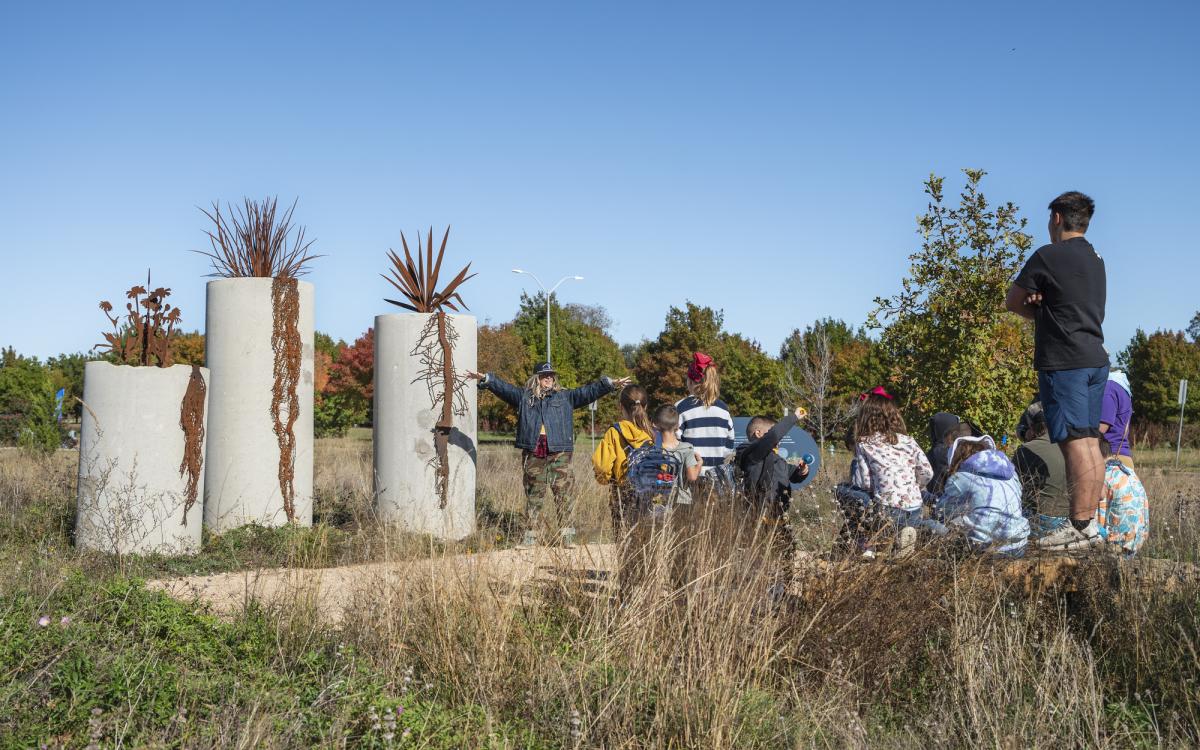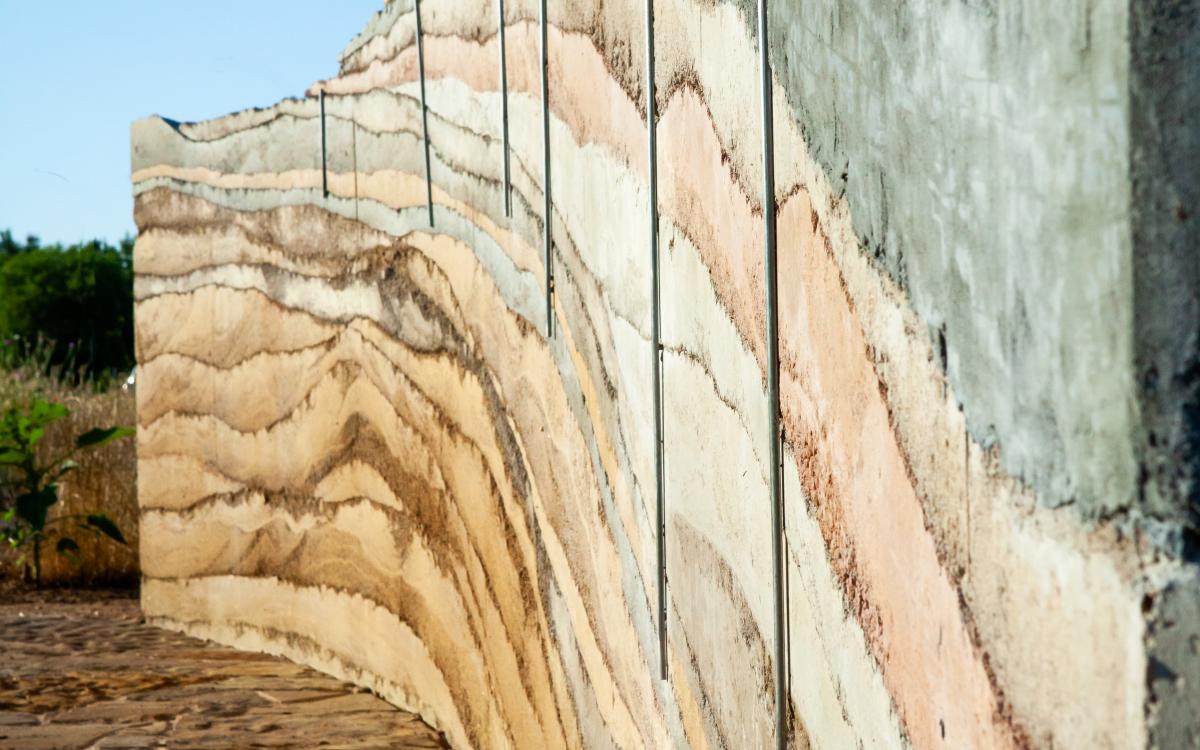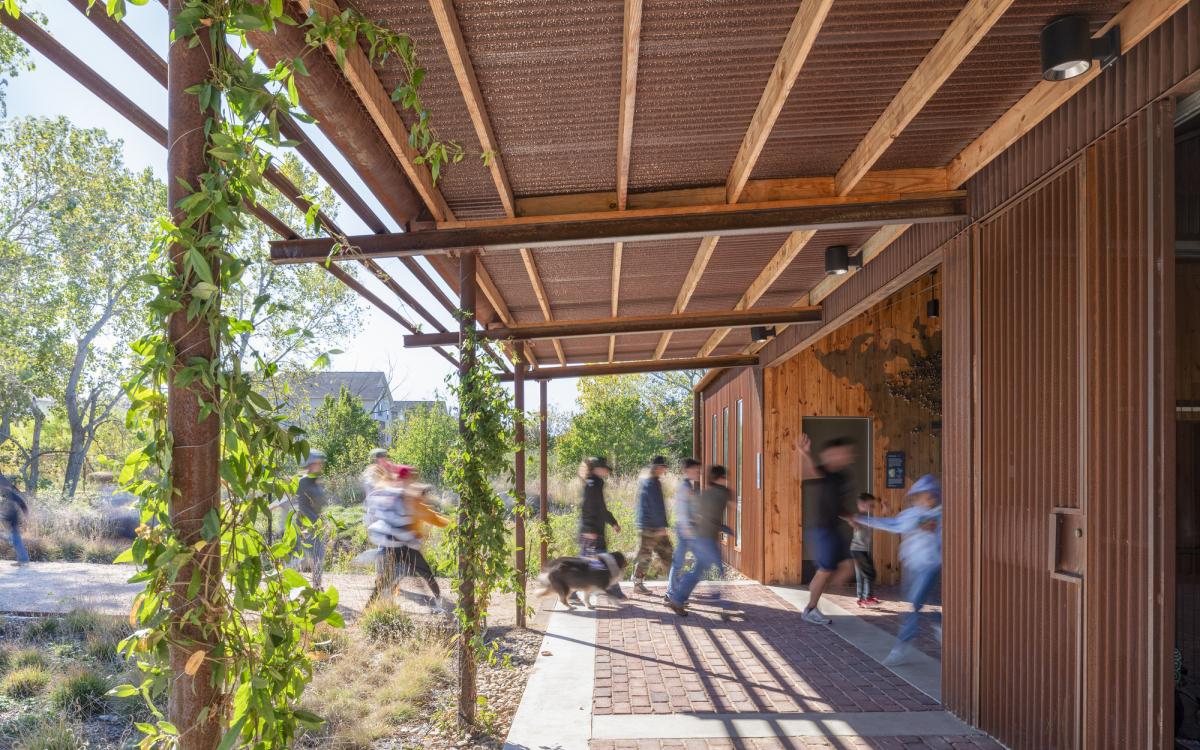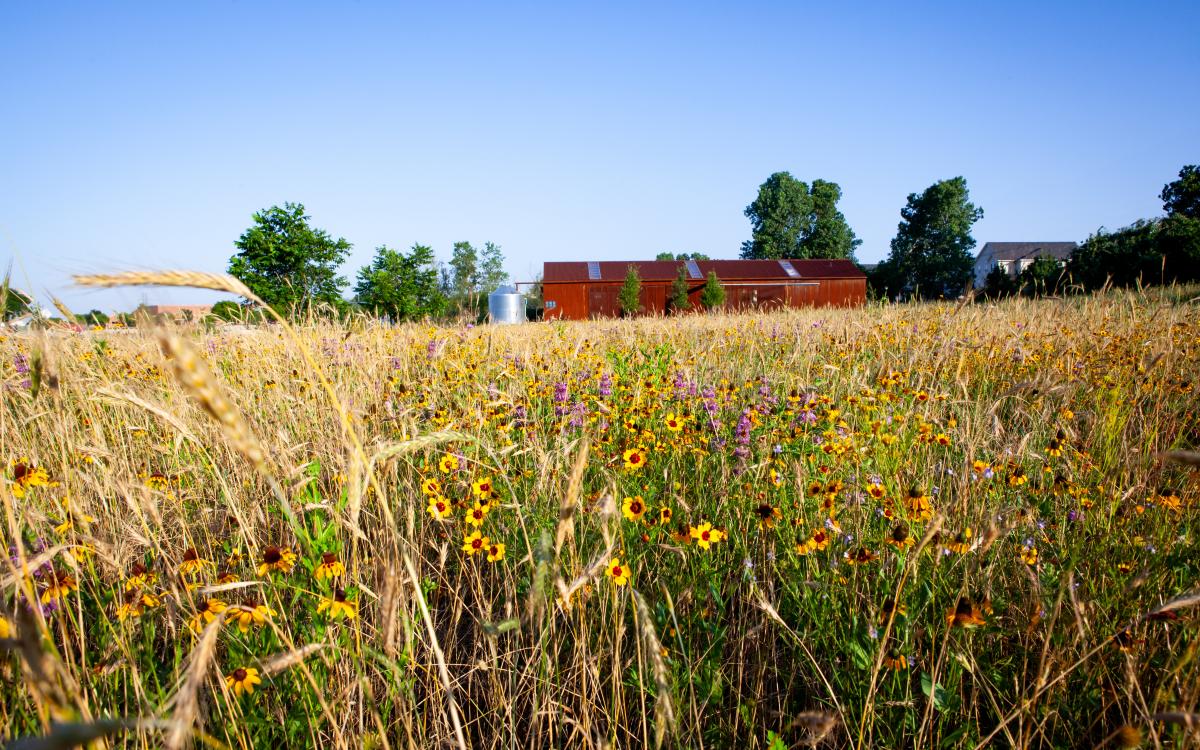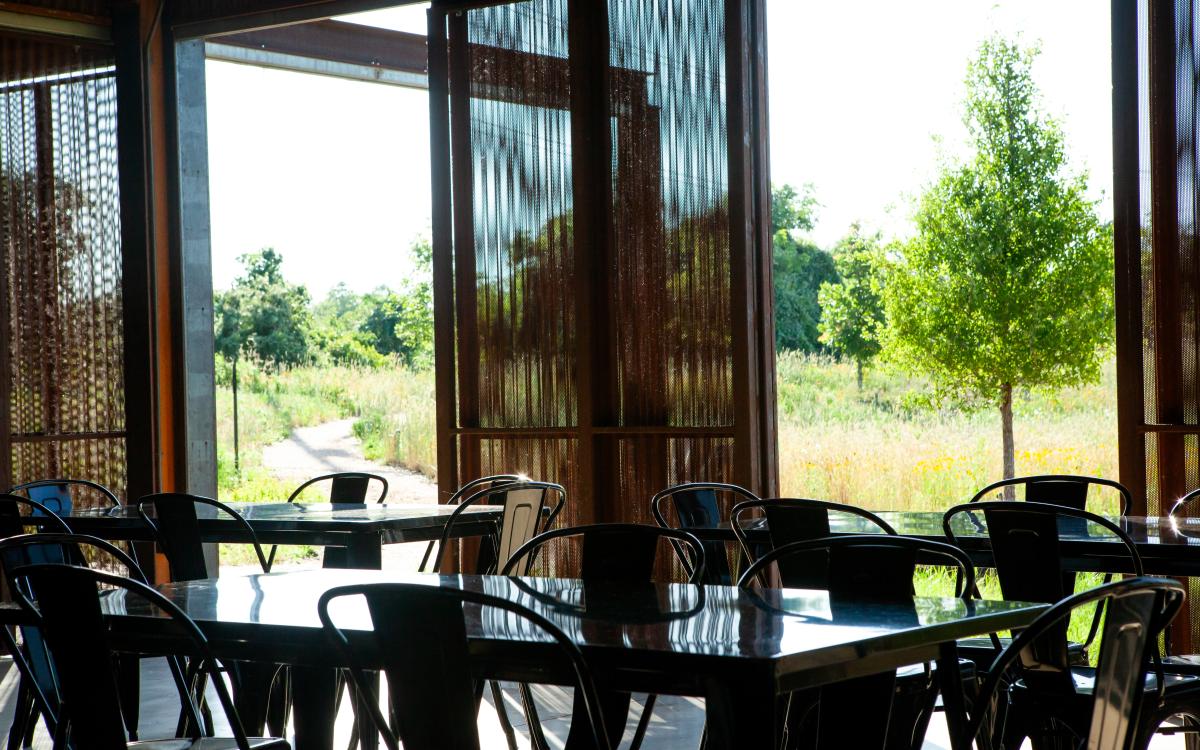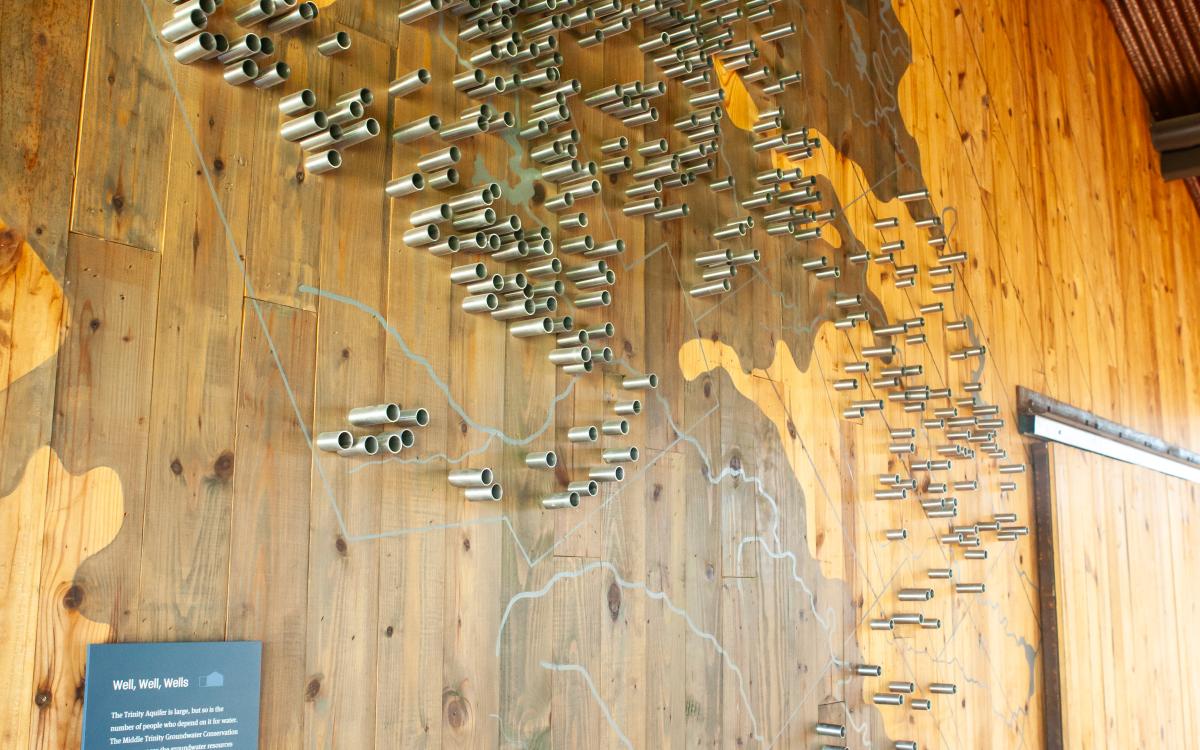Stephenville, TX
United States
The SITES Gold Ditch Water Discovery Center, known as "THE DITCH," exemplifies sustainable development and offers hands-on experience in water conservation and ecological education. Located within a densely developed commercial corridor, the center functions as a natural sanctuary, featuring restored prairie and riparian habitats that demonstrate the resilience of native ecosystems in urban environments. Each design element is intentionally crafted to foster public engagement and awareness, advancing conservation and restoration principles that inspire sustainable stewardship.
Aligned with the Middle Trinity Groundwater Conservation District’s mission to protect and conserve groundwater resources, the Ditch Water Discovery Center showcases a comprehensive suite of green infrastructure strategies—including rain gardens, bioswales, native vegetation, and a rainwater capture system—designed to mitigate stormwater runoff, promote groundwater recharge, and minimize irrigation demands.
A reclaimed 1900s steel truss bridge spans the restored riparian corridor, connecting visitors to an outdoor learning center targeting net-zero energy performance through solar power. Constructed from locally manufactured, recycled steel, the facility features perforated steel walls with operable panels to optimize daylight and natural ventilation, eliminating the need for HVAC. The classroom is designed for deconstruction and incorporates reclaimed materials, such as Thurber bricks salvaged from Stephenville streets and repurposed wood cladding. Rainwater harvested from the roof supports on-site irrigation, reinforcing the project’s commitment to sustainable water management. A 2.75-acre native prairie restoration further enhances wildlife habitat, sequesters carbon, encourages groundwater recharge, and supports low-impact stormwater management.
Interpretive trails traverse the site, offering educational installations that explore the relationship between people and the natural environment. Notable features include a rammed earth wall illustrating Trinity aquifer formations beneath the district’s four counties and three concrete pillars with steel cutouts of Purple Coneflower, Little Bluestem, and Yucca, highlighting the extensive root systems and drought resilience of native plants. A mural of the Trinity aquifer, overlaid on district counties and embedded with stainless steel tubes representing groundwater well densities, underscores the center’s role as a vital educational resource.
Since its grand opening, THE DITCH has quickly become a new local favorite. While the center was designed with school visits in mind, it also offers programming for the wider community. Through its innovative landscape and immersive, hands-on learning experiences, the Middle Trinity Groundwater Conservation District cultivates future environmental stewards and demonstrates the essential role of natural resource conservation.
Key project achievements include:
- 100% of electricity generated on-site through renewable energy systems
- 97% reduction in potable water use compared to baseline
- On-site management of 1.97 inches of rainfall (95th percentile event) via green infrastructure that sustains vegetation and replenishes soil moisture
- 100% native plant palette utilized throughout the landscape
- 44% of construction materials salvaged
- 54% of materials contain recycled content
- 77% of materials sourced from local manufacturers
- 38% of material manufacturers demonstrate sustainable business practices
- 39% of materials support transparency and safer chemistry
- 100% of soil and vegetation reused on-site
- Comprehensive educational programming, including interactive exhibits on water conservation, energy efficiency, and habitat restoration, as well as educational art installations and year-round tours and events
Project team includes:
- Lake Flato Architects
- Studio Outside
- Regenerative Environmental Design
- fd2s inc
- Bridge Projects
- Waldrop Construction
- Middle Trinity Groundwater Conservation District
Image credits:
- Image 1, credit Seth Winkler: Interpretive landscape art illustrates the extensive root systems of native plants, emphasizing their role in promoting drought resilience and improving rainwater infiltration.
- Image 2, credit Kate Audrey: A restored 1900s steel truss bridge gracefully spans the revitalized riparian corridor, connecting visitors to the net-zero energy outdoor learning center.
- Image 3, credit Kate Audrey: A rammed earth interpretive wall artistically depicts the layers of the Trinity aquifer formations, showcasing the varying well depths needed to access groundwater in the district's four counties.
- Image 4, credit Seth Winkler: Built for deconstruction and reuse, the outdoor classroom features reclaimed Thurber bricks and repurposed wood wall cladding.
- Image 5, credit Kate Audrey: A biodiverse native prairie is carefully graded to guide stormwater through shallow channels, enhancing water quality, groundwater recharge, and habitat value.
- Image 6, credit Kate Audrey: Native demonstration gardens, stormwater bioswales, and raingardens welcome visitors at the project entrance, offering educational opportunities along accessible trails.
- Image 7, credit Kate Audrey: Surrounded by restored native prairie, the outdoor classroom features locally manufactured, perforated steel panels with high recycled content, strategically oriented to maximize daylight and natural ventilation for year-round comfort.
- Image 8, credit Kate Audrey: A mural of the Trinity Aquifer, overlaid on district counties and embedded with stainless steel tubes representing groundwater well densities, reinforces the center’s role as a vital educational resource.

